The Space Day of China, which falls on April 24, is more special this year, as it marks the 50th anniversary of the successful launch of Dongfanghong-1, the country’s first man-made satellite. On April 23, President Xi Jinping, also general secretary of the Communist Party of China Central Committee and chairman of the Central Military Commission, wrote in reply to the letter by the senior space scientists, including alumni WANG Xiji of KUST, who engaged in the Dongfanghong-1 mission. President Xi Jinping extended his sincere greetings to the senior space scientists and expressed his sincere gratitude to all the aerospace researchers who have learned from and upheld the spirit of the predecessors in the making of the first nuclear weapon, the first ballistic missile and the first man-made satellite of China, striving to build it into a stronger space power.
The full text:
Dear SUN Jiadong, WANG Xiji and other senior comrades:
I am very glad to hear from you. I was deeply moved by what you have achieved in the successful launching of Dongfanghong-1, the country’s first man-made satellite. All of you, as the participants and eye-witnesses of the successful mission, have devoted your youth to China’s space cause, and now at a venerable age you are still caring about the future development of China's aerospace industry.
Fifty years ago when I was in Liangjiahe, a village in northern Shaanxi Province, northwest China, I was greatly excited at the news that the Dongfanghong-1 satellite was successfully launched. The extraordinary achievements created by your hard work made the whole nation proud and demonstrated the self-improvement spirit of the Chinese people. The merits of the elder space researchers have been firmly inscribed into the annals of the People’s Republic of China. No matter how the conditions may have changed, the spirit of self-reliance and working hard of the Chinese people will remain unchanged. Space professionals in the new era should follow the example set by all of you and carry on your spirit in the making of the nation's first nuclear weapon, first ballistic missile and first satellite by braving difficulties and overcoming obstacles to further develop space science and technology so as to realize the great dream of building a powerful space nation as soon as possible.
Wish you a long, healthy and happy life!
Xi Jinping
April 23, 2020
On April 24, 1970, after years of unremitting efforts of space researchers and workers, China successfully launched Dongfanghong-1, its first man-made satellite.
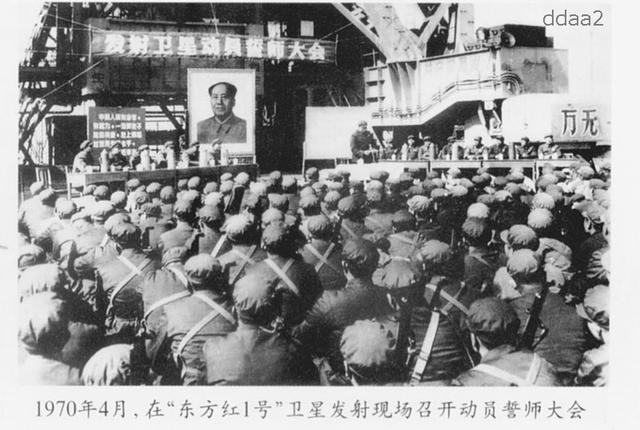
the mobilization meeting and oath-taking rally held at the launch site of Dongfanghong-1 in April 1970
As an important part of the country’s “two bombs and one satellite” project, the successful launch of the man-made satellite "Dongfanghong-1" marked China’s first step in exploring the vast space and its peaceful use of outer space. In order to remember this history and inherit the spirit and with the approval of the Central Committee of the CPC and the State Council, China has set April 24 as the Space Day of China since 2016.
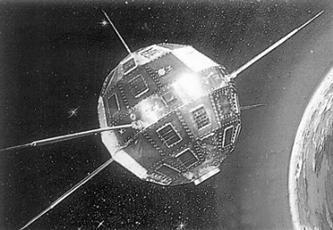
the man-made satellite: “Dongfanghong-1”
Recently, eleven elder space scientists who participated in the Dongfanghong-1 mission --- SUN Jiadong, WANG Xiji, QI Faren, HU Shixiang, PAN Houren, HU Qizheng, PENG Chengrong, ZHANG Futian, CHEN Shouchun, HEN Houjian, and FANG Huxin---wrote a letter to president XI Jinping, reviewing the history of the country’s space development and expressing their confidence in realizing the Chinese Dream of national rejuvenation and the country's space dream.
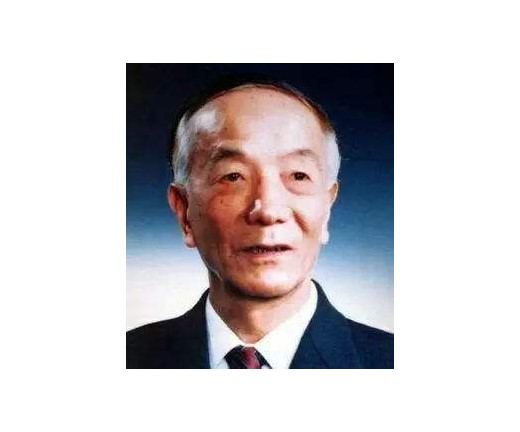
WANG Xiji, a prominent alumni of KUST
WANG Xiji, born in 1921 in Dali, Yunnan province, is an expert in satellite and satellite returning technique. He is an academician of the Chinese Academy of Sciences, of Chinese Academy of Engineering and of the International Academy of Astronautics.
In 1937, WNAG Xiji studied in the Civil Engineering Department of Kunhua Senior Industrial School, one of the predecessors of KUST, and then he was admitted to the Department of Mechanical Engineering of the National Southwest Associated University in Southwest China's Yunnan province with excellent performance. In 1948, he went to study at the Research Institute of Virginia Polytechnic Institute in the United States and obtained his master degree. Back to China in 1950, he successively served as an associate professor and professor at Dalian Institute of Technology, Shanghai Jiao Tong University and Shanghai Tech University. After 1965, he successively served as Vice President of the Fifth Research Institute of the Ministry of Seven Machinery, Director of the Science and Technology Commission, and Chief Engineer of the Ministry of Aerospace Industry, to mention just a few posts he has taken.
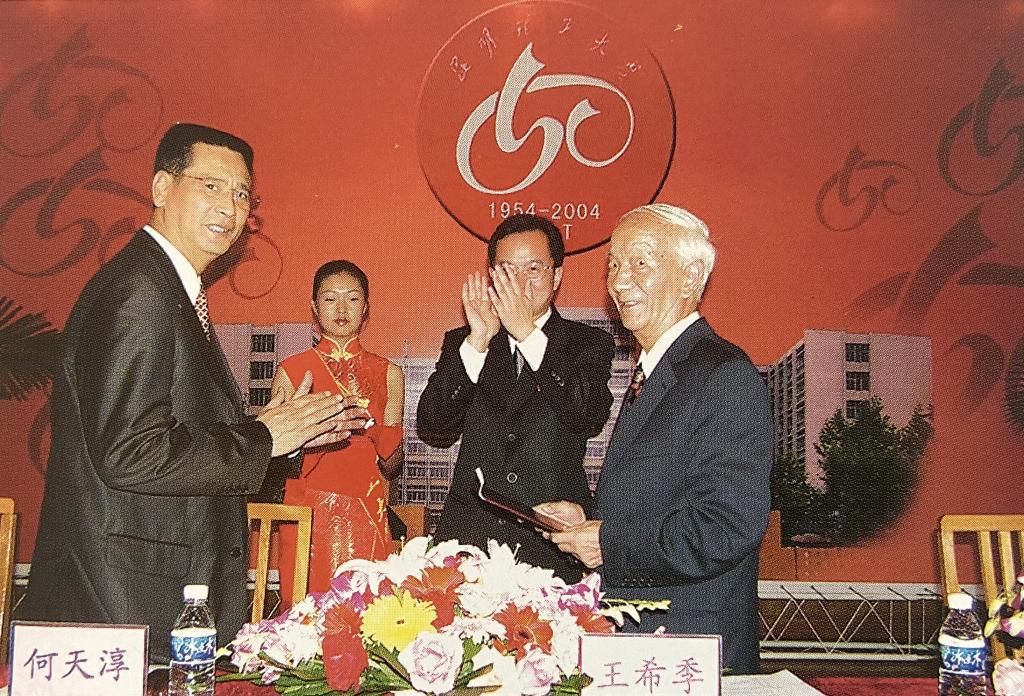
Academician WANG Xiji received a letter of appointment from HE Tianchun (left), Director-general of Education Department of Yunnan Province and ZHOU Rong (middle), President of KUST at KUST's 50th anniversary ceremony in 2004
Academician WANG Xiji, one of the early organizers engaged in rocket technology research in China, has been the technical leader of China's first liquid-fuel rocket, meteorological rockets, biological rockets and high-altitude test rockets. Under his auspices, he adopted a large number of new technologies and broke through a series of technical difficulties, which move forward China’s satellite returning technology into international advanced level.
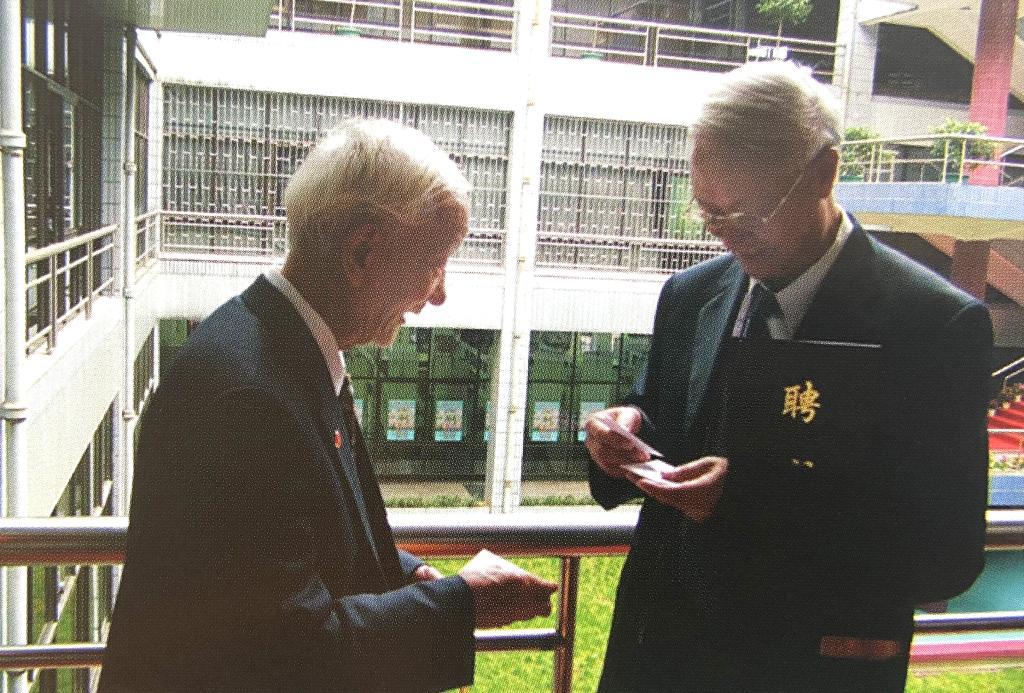
Academician WANG Xiji (left) cordially talking with Academician DAI Yongnian
Kunhua Senior Industrial School, one of the predecessors of KUST
In 1930, the first Provincial Industrial School was founded in Kunming by LONG Yun (1884—1962), the first governor of Yunnan province. Later, it was renamed as Provincial Kunhua Senior Industrial Vocational School (referred to as: Kunhua Industrial School), which was one of the predecessors of Yunnan Industrial Institute established in 1974, which was merged into Yunnan Institute of Technology, thus becoming one of important predecessors of Kunming University of Science and Technology.
In the spring of 1930, 120 new students were admitted into Kunhua Industrial School and then were divided into Class A and Class B. A building in the eastern foot of Shuangta Temple was used for classrooms and offices. Most of the buildings in Shuangta Temple belonged to the School, and then Wenchang Palace was also put into use for the School. During the Chinese People's War of Resistance against Japanese Aggression, the school moved into the area between Jinning and Chenggong, Yunnan province.
On December 1, 1945, the 12?1 Democratic Movement broke out in Kunming with the slogan of “fighting against the civil war and battling for democracy”. Some teachers and students of Kunhua Industrial School participated in this democratic movement. ZHANG Huachang, one of the students, sacrificed his precious life in this movement and was awarded as one of the “Four Martyrs” in the Movement.
---According to the memories of BI Jindo, the former President of Kunhua Industrial School.
Translated by: YU Wenjiao, Faculty of Foreign Languages and Cultures
Edited by: WANG Ying, School of International Education
Issued by: Division of Overseas Cooperation (English)
Edited by: KUST News Center (Chinese)